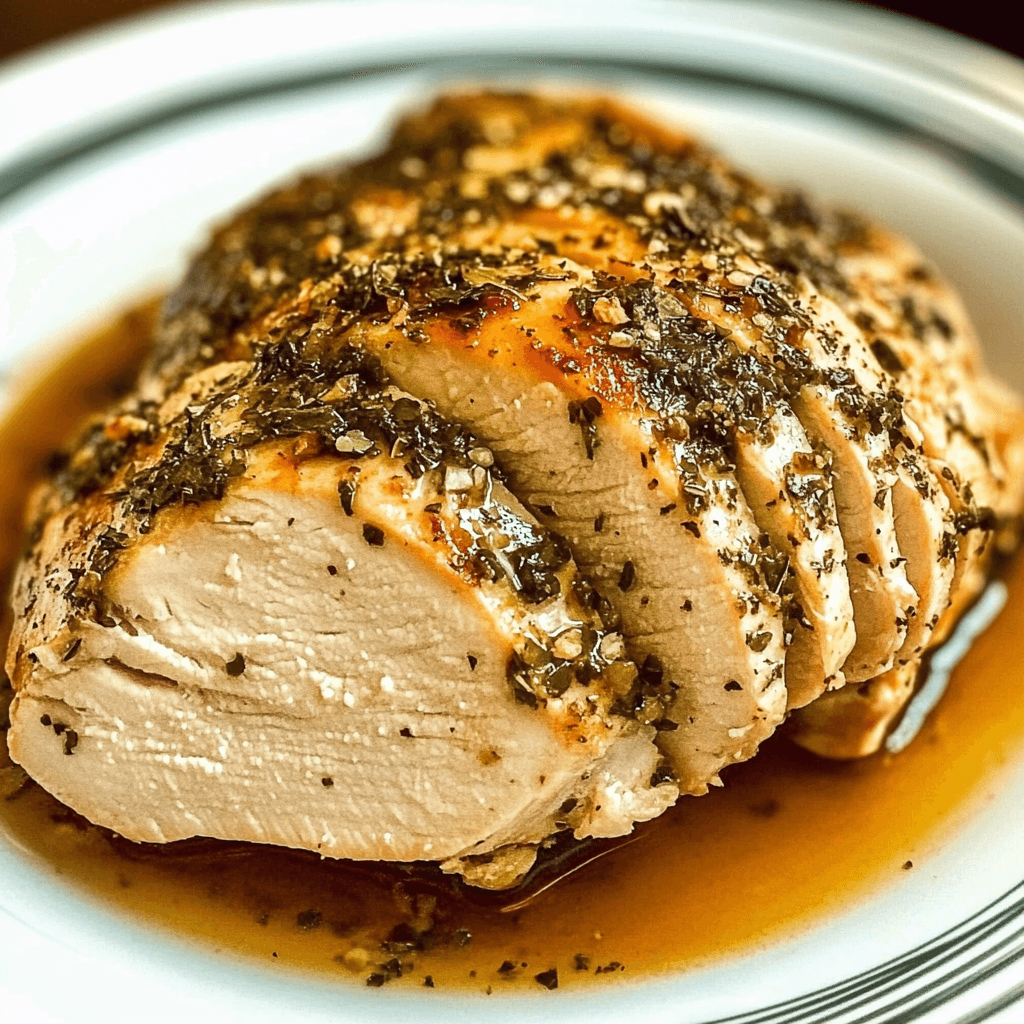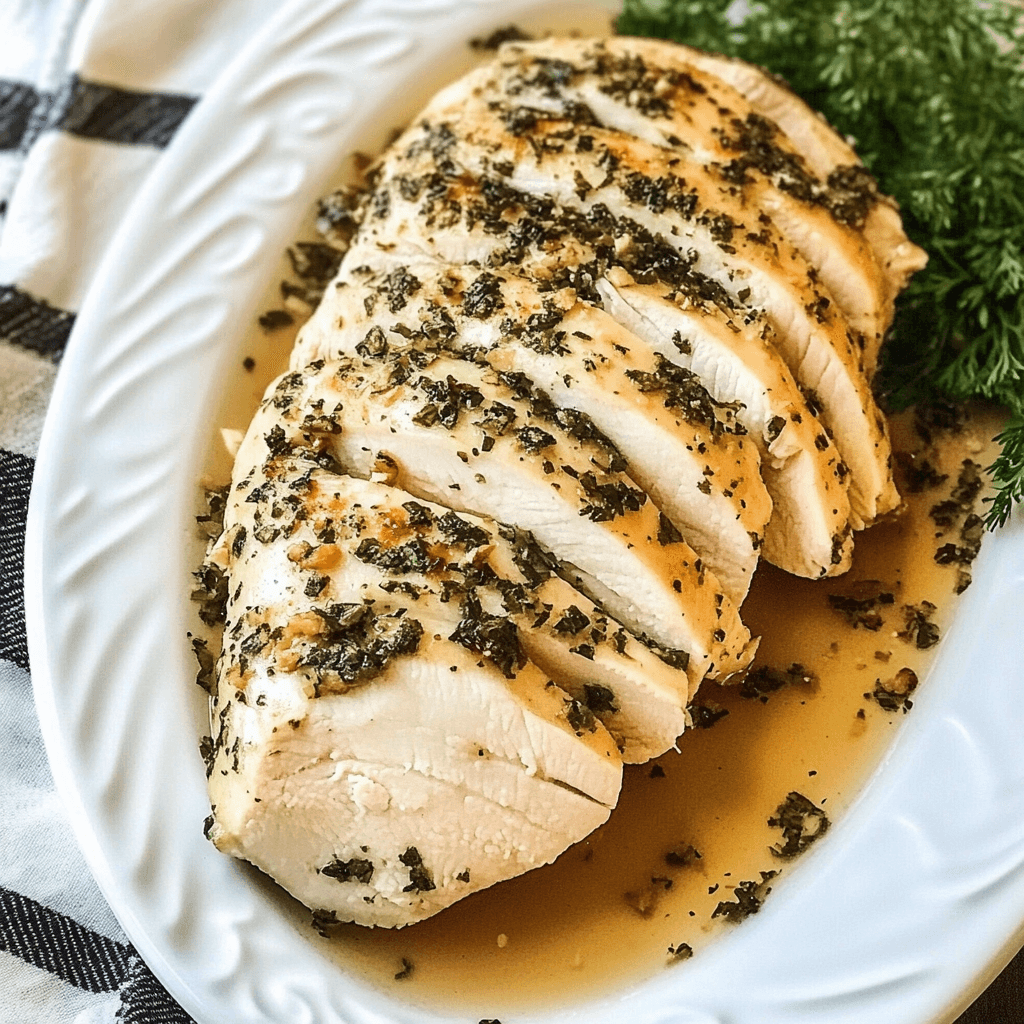Roasted turkey breast is a quintessential dish that balances tradition and modern culinary simplicity. It’s celebrated for its versatility, offering a lean, flavorful, and nutritious option for home cooks and professional chefs alike. Perfect as the centerpiece for a Thanksgiving feast, a weeknight dinner, or meal prep for the week ahead, roasted turkey breast satisfies a range of occasions and palates.
This dish is beloved for its ease of preparation and adaptability to different cooking styles. From a basic herb rub to creative marinades, the possibilities for flavor are endless. Its lean nature and high protein content make it an excellent choice for those seeking a healthy yet hearty meal. Additionally, roasting turkey breast is faster and more convenient than preparing a whole turkey, making it a go-to option for smaller gatherings or quick, wholesome meals.
Roasted turkey breast also pairs beautifully with a wide array of sides and sauces, ensuring that it fits seamlessly into both traditional and modern dining spreads. If you’re inspired to explore other creamy and comforting options to complement your turkey, consider checking out this recipe for Creamy Slow Cooker Chicken.
In this guide, we’ll walk you through everything you need to know—from selecting the best turkey breast and preparing it to serving it with style and flair. Whether you’re a seasoned chef or a beginner, roasted turkey breast is a dish that delivers both simplicity and sophistication.

Ingredients for the Perfect Roasted Turkey Breast
Here’s what you’ll need to prepare a perfectly roasted turkey breast:
- 1 boneless or bone-in turkey breast (about 4–6 lbs)
- 2 tablespoons olive oil or melted butter
- 1 teaspoon garlic powder
- 1 teaspoon dried thyme
- 1 teaspoon rosemary, minced
- Salt and pepper to taste
- Optional: Lemon slices and fresh herbs for garnishing
Looking for a side dish to pair with your turkey breast? Try this hearty Mac and Cheese for the ultimate comfort food combo.
Step-by-Step Instructions
1. Preparing the Turkey Breast
- Preheat your oven to 350°F (175°C).
- Rinse the turkey breast and pat it dry with paper towels.
- Rub the turkey with olive oil or melted butter to lock in moisture.
2. Seasoning the Turkey
- Mix garlic powder, thyme, rosemary, salt, and pepper in a small bowl.
- Generously season the turkey breast, ensuring the seasoning reaches every corner.
3. Roasting to Perfection
- Place the turkey breast on a roasting pan lined with a rack.
- Roast uncovered for about 20 minutes per pound, or until the internal temperature reaches 165°F (74°C).
- Baste the turkey with its juices halfway through the cooking process to keep it moist.
4. Letting It Rest
- Remove the turkey from the oven and tent it with aluminum foil.
- Allow it to rest for 10–15 minutes before slicing to retain its juices.
Serving Ideas for Roasted Turkey Breast
Roasted turkey breast pairs beautifully with a variety of sides:
Vegetable Sides
- Roasted Vegetables – Try a mix of carrots, Brussels sprouts, and butternut squash roasted with olive oil, garlic, and herbs.
- Sautéed Green Beans – Toss green beans with butter, lemon zest, and toasted almonds for extra flavor.
- Garlic Parmesan Asparagus – Roasted asparagus with a sprinkle of Parmesan and a squeeze of fresh lemon.
- Balsamic Glazed Brussels Sprouts – Roasted sprouts with a drizzle of balsamic glaze and crispy bacon bits.
- Fresh Side Salad – A simple arugula salad with cherry tomatoes, shaved Parmesan, and a light vinaigrette adds a refreshing contrast.
Starches & Hearty Sides
- Creamy Mashed Potatoes – Classic mashed potatoes with butter, heavy cream, and roasted garlic for extra richness.
- Cheesy Tortellini – Cook tortellini and toss with a creamy garlic-Parmesan sauce for a comforting side.
- Sweet Potato Casserole – Mashed sweet potatoes topped with a brown sugar-pecan crumble or marshmallows.
- Wild Rice Pilaf – A flavorful blend of wild rice, sautéed onions, mushrooms, and cranberries.
- Stuffing or Dressing – Traditional herb stuffing with sausage and apples or a cornbread-based stuffing for a Southern twist.
Sauces & Toppings
- Classic Turkey Gravy – Made from turkey drippings, butter, flour, and broth for a rich, velvety finish.
- Cranberry Sauce – Homemade cranberry sauce with orange zest and a hint of cinnamon for a festive touch.
- Honey Mustard Glaze – A sweet and tangy drizzle made with Dijon mustard, honey, and apple cider vinegar.
- Garlic Butter Drizzle – Melted butter with fresh garlic, parsley, and a pinch of sea salt enhances the turkey’s flavor.
Bread & Accompaniments
- Flaky Buttermilk Biscuits – Soft, buttery biscuits perfect for sopping up gravy.
- Garlic Herb Dinner Rolls – Light and fluffy rolls brushed with garlic butter.
- Cranberry Walnut Bread – A slightly sweet bread that pairs well with turkey.
Wine Pairing Suggestions
- White Wine: A crisp Chardonnay or Sauvignon Blanc complements the turkey’s natural flavors.
- Red Wine: A light Pinot Noir or Beaujolais offers a fruit-forward balance without overpowering the dish.
Tips for the Best Roasted Turkey Breast
- Always use a meat thermometer to ensure accurate cooking.
- Brining the turkey breast overnight adds flavor and keeps it juicy.
- Use fresh herbs like thyme and rosemary for a vibrant aroma.
FAQs About Roasted Turkey Breast
1. How Do You Keep Roasted Turkey Breast Moist?
To keep your roasted turkey breast moist:
- Basting: Baste the turkey breast with its juices every 30 minutes while roasting. This keeps the surface moist and adds flavor.
- Brining: Brine the turkey breast for at least 12 hours before roasting. A simple brine includes water, salt, sugar, and optional herbs or spices.
- Resting Period: Let the turkey breast rest for 10–15 minutes after roasting. This allows the juices to redistribute throughout the meat, preventing dryness.
- Covering During Cooking: If the skin browns too quickly, cover the turkey breast with foil to prevent it from drying out while it finishes cooking.
2. Can You Cook Turkey Breast from Frozen?
Yes, you can cook turkey breast from frozen, but you’ll need to adjust the cooking time:
- Increase Cooking Time: Plan for at least 50% more time compared to thawed turkey breast. For example, if a thawed turkey takes 2 hours to cook, a frozen one may take 3 hours or more.
- Lower Initial Temperature: Start cooking at 325°F to allow the turkey to thaw evenly while it cooks.
- Check Internal Temperature: Use a meat thermometer to ensure the thickest part of the turkey breast reaches 165°F.
- Avoid Seasoning Directly: It’s difficult to season a frozen turkey effectively. Brush with butter or oil and season it midway through cooking.
3. What’s the Difference Between Bone-In and Boneless Turkey Breast?
- Bone-In Turkey Breast:
- Retains more moisture during cooking.
- Offers richer flavor as the bone adds depth to the meat’s taste.
- Takes longer to cook due to the bone.
- Boneless Turkey Breast:
- Easier to carve and serve.
- Cooks faster, making it convenient for weeknight dinners.
- Slightly less flavorful compared to bone-in but works well with strong marinades or rubs.
4. What’s the Best Way to Reheat Leftover Turkey Breast?
Reheating turkey breast while keeping it juicy can be tricky. Follow these tips:
- In the Oven:
- Preheat the oven to 300°F.
- Place slices of turkey in an oven-safe dish with a splash of broth or water. Cover tightly with foil to trap steam.
- Heat for 15–20 minutes or until warmed through.
- On the Stove:
- Place turkey slices in a skillet with a bit of broth or butter.
- Cover and heat over low-medium heat until warmed.
- In the Microwave:
- Use a microwave-safe dish and add a small amount of broth or gravy.
- Cover with a microwave-safe lid and heat in short bursts (30 seconds at a time) to avoid overcooking.
5. How Long Can You Store Cooked Turkey Breast in the Refrigerator?
Cooked turkey breast can last:
- In the Refrigerator: Up to 3–4 days when stored in an airtight container.
- In the Freezer: Up to 2–3 months if wrapped tightly in foil or freezer bags. Ensure it’s labeled with the date for easy tracking.
To maintain freshness, reheat only the portion you intend to eat and keep the rest stored properly.
6. What Side Dishes Pair Best with Roasted Turkey Breast?
Roasted turkey breast pairs well with a variety of sides:
- Classic Options: Mashed potatoes, green beans, and cranberry sauce.
- Comfort Food: Cheesy dishes like Mac and Cheese.
- Healthy Choices: Roasted Brussels sprouts, quinoa salads, or steamed vegetables.
- Festive Additions: Sweet potato casserole, stuffing, or homemade dinner rolls.

7. Can You Use Roasted Turkey Breast for Other Recipes?
Absolutely! Roasted turkey breast is a versatile ingredient for many dishes:
- Sandwiches: Use slices of turkey breast in paninis or wraps.
- Soups: Add diced turkey breast to soups like creamy tortilla or vegetable chowder.
- Salads: Toss shredded turkey breast into a salad for added protein.
- Casseroles: Combine turkey with pasta and a creamy sauce for a comforting bake.
8. What Should You Do If Your Turkey Breast Turns Out Dry?
If your turkey breast ends up dry:
Moistening Sauce: Drizzle with melted butter or a broth-based glaze before serving.
Use Gravy: Serve with a rich gravy or sauce to add moisture and flavor.
Shred and Reuse: Incorporate the meat into casseroles, soups, or stews where it can absorb liquid.
Conclusion
Roasted turkey breast is more than just a dish; it’s a centerpiece for comfort and celebration. Whether you’re preparing a quick weeknight dinner or hosting a festive gathering, this recipe is both versatile and dependable. Its lean, healthy profile makes it a favorite among health-conscious individuals, while its rich, savory flavor appeals to even the pickiest eaters.
The beauty of roasted turkey breast lies in its ability to adapt to various culinary styles. You can keep it simple with classic herbs or elevate it with unique marinades and spices. Pair it with traditional sides like mashed potatoes or explore creative accompaniments like Cheesy Tortellini to make every meal special.
By following the tips in this guide, you’ll ensure your turkey breast is always juicy, flavorful, and perfectly cooked. So whether it’s a holiday feast or a quiet dinner at home, roasted turkey breast will remain a timeless and satisfying choice for every occasion.
